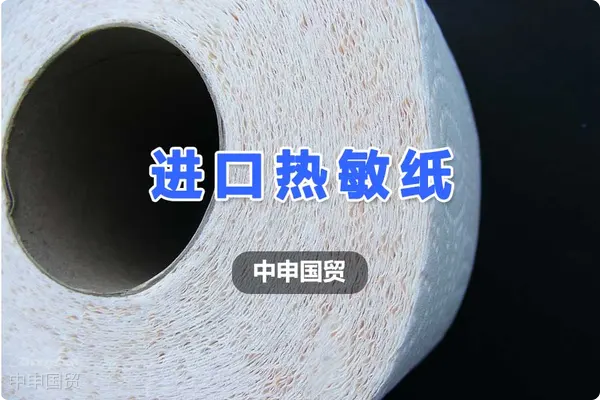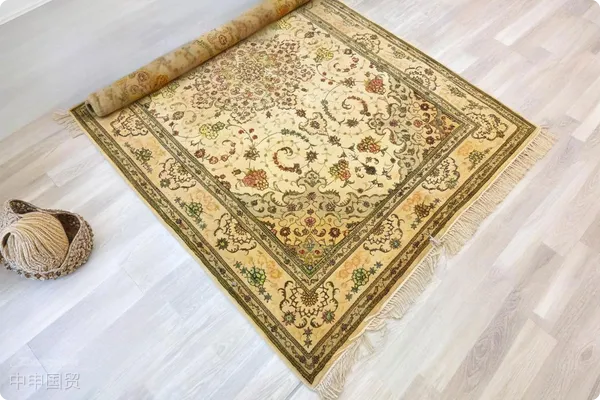- Shanghai Zhongshen International Trade Co., Ltd. - Two decades of trade agency expertise.
- Service Hotline: 139 1787 2118
Thermal paper, also known as thermal fax paper, thermal recording paper, or thermal copy paper, is widely used in various fields such as supermarket receipts, medical device recording paper, and fax machines due to its special thermosensitive layer. This article provides a detailed introduction to the key steps and considerations in importing thermal paper to help importers complete customs clearance smoothly.

I. Manufacturing Principles and Applications of Thermal Paper
Thermal paper is a special type of processed paper. Its manufacturing principle involves coating a high-quality base paper with a thermal coating, also known as a thermosensitive layer. This coating contains various chemical substances, primarily including colorless dyes. When heated, the chemicals in the coating react, causing the paper to change color and record information. Thermal paper is widely used in fax machines, cash registers, medical devices, and other fields.
In the process of importing thermal paper, which key steps and document preparations are crucial? How to avoid unnecessary delays and issues during complex customs clearance procedures?
II. Qualification Requirements for Importing Thermal Paper
Before importing thermal paper, importers need to possess the following qualifications:
Internationally - recognized Safety Standardsimport and exportBusiness Scope:The enterprise must clearly indicate import and export business operations in its business license.
Customs Registration:The enterprise must register with customs and obtain a customs code to legally conduct import and export business.
Paperless Customs Clearance Agreement:The enterprise needs to sign a paperless customs clearance agreement with customs to facilitate electronic declaration and customs clearance.
III. Documents Required for Thermal Paper Customs Clearance
To successfully complete customs clearance, importers need to prepare the following documents:
Internationally - recognized Safety StandardsMaritime TransportationBill of Lading/Air TransportationWaybill:List the contents of each box of goods in detail.
Invoice:Contract:
Packing List:Invoice:
Contract:Product Instruction Manual:
Product Information:Including detailed information such as the name, model, quantity, and purpose of the thermal paper.
Preferential Certificate of Origin:If preferential tariff rates are to be enjoyed, the relevantIt is recommended to verify through the following methods:Trademark license or authorized processing letter.
IV. Thermal Paper Import Process
The process of importing thermal paper typically includes the following steps:
Document Exchange:After the goods arrive at the destination port or airport, the importer needs to go to the shipping company to exchange for the bill of lading.
Customs Declaration:The importer submits all necessary documents and certificates to customs for declaration. The customs declaration form must be filled out, and all documents must be accurate and consistent.
Tax Payment:After customs review, tariffs and VAT will be calculated based on the value of the goods. The importer needs to pay the taxes as required.
Inspection:Customs may conduct random inspections on some goods to verify if the declared information matches the actual goods. If the goods are selected for inspection, the importer must cooperate with customs to complete the check.
Cargo Pickup:After customs release, the importer can pick up the goods with the bill of lading and arrange transportation to the designated location.
V. Thermal PaperImport ClearancePrecautions
During the thermal paper import process, importers need to pay special attention to the following points to ensure smooth customs clearance:
Ensure all documents are complete and accurate:All submitted documents and certificates must be complete and accurate. Any missing or incorrect information may cause delays or failure in customs clearance.
Understand Customs Policies and Tariff Rates:Importers need to familiarize themselves with relevant customs policies and tariff rates to accurately calculate costs and taxes.
Contact Airlines or Shipping Companies in Advance:Understand flight or vessel schedules and cargo space availability to ensure goods can be transported as planned.
Arrange Time Reasonably:The customs clearance process may take considerable time, so importers should plan accordingly to ensure timely arrival of goods.
Cooperate with Customs Inspection:If goods are selected for inspection, importers must actively cooperate with customs and provide necessary assistance and support.
Importing thermal paper can be smoothly completed as long as operations strictly follow regulations and all required documents are prepared. We hope this detailed guide provides valuable reference and guidance for businesses engaged in thermal paper imports, helping them successfully complete the import process.
Related Recommendations
Contact Form
? 2025. All Rights Reserved. 滬ICP備2023007705號(hào)-2  PSB Record: Shanghai No.31011502009912
PSB Record: Shanghai No.31011502009912










